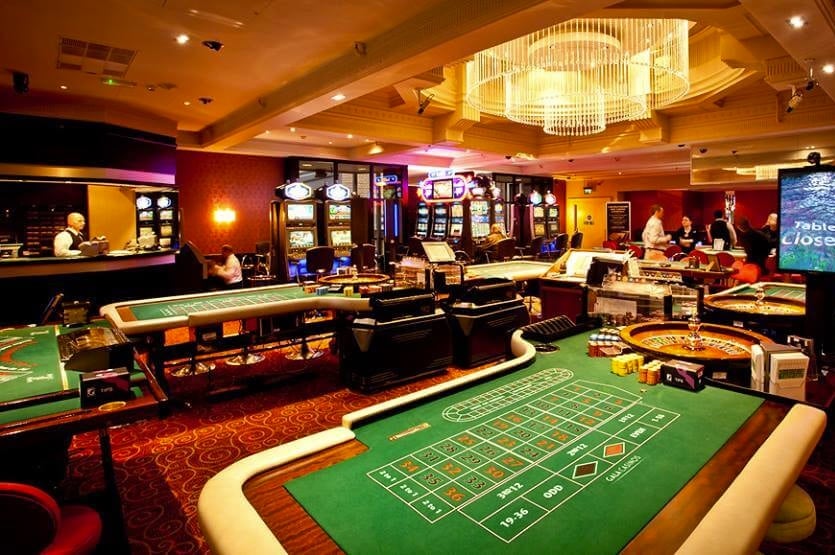
In the vibrant and thrilling world of casinos, where fortune and strategy intertwine, color and design play a critical role in attracting gamblers. As soon as players step into a casino or access a gaming website, they are enveloped in a visual feast that captures their attention and lures them to discover more. Bright colors, engaging graphics, and innovative layouts are carefully crafted to create an environment of excitement and anticipation, ultimately enhancing the gaming experience.
While players move through the ever-changing landscape of casino games, they encounter a variety of designs that not only serve aesthetic purposes but also affect emotions and choices. Hues like red and yellow symbolize wealth and luck, while calm navy and emeralds can create a much tranquil environment. Grasping how these elements function together allows casinos to create an welcoming and energizing atmosphere that encourages players to engage with the games, invest more time at the tables, and increase their overall enjoyment.
The Study of Tint in Casino Games
Tint plays a key role in the development of casino games, affecting players’ emotional states and actions. Vivid and vibrant shades, such as red and yellow, are often used to stimulate thrill and draw attention. These colors create a sense pressure and dynamism, encouraging gamblers to participate more enthusiastically with the experience. By strategically selecting tints, developers aim to evoke feelings of satisfaction and expectation, which can enhance the total player experience.
Various colors also have psychological meanings that can affect how gamblers perceive their chances of victory. For instance, emerald is frequently associated with fortune and wealth, making it a frequent choice in games like the roulette wheel and poker games. This association can result players to feel more optimistic and confident in their play, ultimately motivating them to bet more. Grasping these links allows game creators to craft environments that enhance player satisfaction and retention.
In addition, the layout of gambling game interfaces often employs gradients and contrasting shades to instruct player actions. For example, successful outcomes may be emphasized with striking, contrasting colors, creating a visual reward. This approach strengthens positive outcomes and promotes repeated gameplay. By exploiting the science of color, casinos can develop activities that not only captivate players but also keep them engaged and invested in their gaming experience. games not on Gamestop
Creative Features that Engage Gamers
The visual appeal of gambling games is largely influenced by the implementation of vibrant colors. Lively and contrasting colors are strategically chosen to create an appealing atmosphere that grabs attention. For example, crimson and golden hues often signify luck and wealth, which is why they are common in the palettes of slot machines and table surfaces. These colors not only attract players in, but they also stir emotions associated with excitement and anticipation, enhancing the overall gaming experience.
In addition to color, the design and organization of gambling games play a crucial role in captivating players. Games are designed to be intuitive, ensuring that players can quickly understand the guidelines and mechanics. User-friendly interfaces, along with captivating graphics and animations, help maintain player interest and promote longer play sessions. The physical elements, such as the feel of the buttons and the audio of the games, also contribute to a holistic sensory experience that keeps players immersed.
In conclusion, thematic elements in game design can significantly influence player choice. Many casino games are inspired by media, fairy tales, or exploration motifs, featuring symbols and characters that connect with players. These themes create a sense of immersion and connection, making each game feel distinct. When players feel a bond to the concept, they are more likely to choose that game over others, leading to higher participation and excitement within the casino environment.
Case Studies: Successful Casino Game Designs
One prime example of successful casino game design is the well-known slot machine series based around popular movies. Games such as those based on the Wizard of Oz and Game of Thrones utilize vibrant colors and top-notch graphics to engage players in familiar narratives. The use of moving visuals and engaging sound effects captures the interest of players, creating an emotional connection to the theme. This tactic not only promotes longer play but also improves the overall gaming experience, yielding increased player retention.
Another effective case is the use of color in table games like blackjack and the wheel. Casinos often develop these games with deep reds and greens, colors traditionally associated with luck and wealth. For instance, the emerald felt on a blackjack table provides a relaxing effect, while the crimson accents in roulette invite anticipation. This intentional use of color helps to establish an inviting atmosphere that stimulates players to engage, fulfilling their psychological impulses and boosting their enjoyment.
Finally, social casino games that include social features and lively, lively designs have achieved remarkable success in engaging players. Games like Zynga Poker and Slotomania leverage striking colors and playful animations to create an inviting online environment. The integration of leaderboards, community sharing options, and in-game rewards fosters competition and community, attracting players in for longer sessions. Such designs not just make the games visually attractive but also emphasize community engagement, a key factor in player retention and engagement within digital casino environments.
